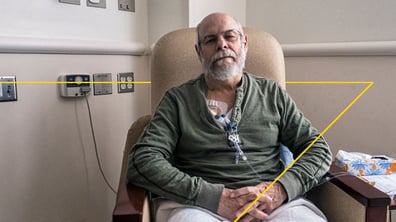Site Monitoring Capacity — the Silent Threat to Clinical Trial Timelines
The clinical research industry is facing a subtle but significant operational challenge. While much attention is given to accelerating clinical trial site activations, patient enrollment, and clinical data systems, one constraint is quietly reshaping trial execution: site limitations on monitoring capacity.
These aren’t temporary hurdles—they represent a shift in how sites manage monitoring demand in clinical trials. Addressing this demands working smarter through Risk-Based Quality Management (RBQM) strategies that align resources with what matters most.
The Post-COVID Monitoring Landscape
Since 2020, the clinical research ecosystem has evolved. Sites haven’t deliberately reduced their willingness to collaborate—but they have introduced standardized limitations on monitoring access. With clinical trial volumes surging and data demands increasing, many sites have formalized policies that cap available days for both on-site and remote monitoring.
When monitors request additional time, they’re often met with firm, standardized responses: “That’s our policy.” This isn’t resistance—it’s structure in response to industry growth.
The outcome? A growing disconnect between sponsor expectations and site capacity—leading to monitoring backlogs that can jeopardize data cleaning timelines, particularly when submission deadlines loom.
The Mathematical Challenge We Can't Ignore
The problem is starkly numerical, particularly in complex therapeutic areas. In complex studies, a single patient can generate 100 pages of data in the first four weeks of treatment. For a site with 10 patients, that's 1,000 pages requiring careful review.
At standard source data verification rates of 30-40 pages per day, those 1,000 pages require 25 days of monitoring. If a site allows only two days on-site every six to eight weeks, completing this review would take over a year—and that's just for initial documentation.
When you do the math, the conclusion becomes inescapable: at some high-enrolling sites, 100% source data verification would take three years for just ten patients unless additional days on site are negotiated—jeopardizing clinical trial timelines and drug development milestones.
While implementing RBQM procedures requires upfront investment in training, technology platforms, and process redesign, these costs are significantly outweighed by the substantial savings achieved by moving away from 100% source data verification. When monitoring resources are focused strategically rather than applied uniformly across all data points, organizations can achieve meaningful cost reductions while maintaining—or even enhancing—data quality and regulatory compliance.
The Risk-Based Imperative
For over a decade, regulatory agencies like the FDA have encouraged sponsors to adopt risk-based monitoring and centralized strategies—emphasizing efficiency without compromising data integrity.1
The logic is clear: Not all data points carry equal weight. In fact, studies show that only around 20% of eCRF data points are considered critical, while the vast majority—nearly 80%—are non-critical and could be monitored through more efficient methods.2
 Example distribution of critical vs. non-critical data points in eCRF systems (Yamada, et al.)2
Example distribution of critical vs. non-critical data points in eCRF systems (Yamada, et al.)2
Despite this, adoption of RBQM—particularly in early-phase trials—has lagged. Many sponsors still default to 100% source data verification, believing it ensures quality. But when site capacity is limited and data volume continues to grow, this approach becomes unsustainable.
The FDA’s 2024 guidance further reinforces the need to align SDV efforts with pre-identified risks, reserving exhaustive checks for primary endpoints, safety data, and problematic sites.3
Risk-based monitoring is now a practical necessity in modern clinical trial operations.
A Forward-Looking Solution:
Embracing RBQM
Addressing this challenge requires a new approach to clinical operations, centered on RBQM:
Patient-to-Monitoring Ratio Planning
Evaluating how many monitoring days are required per patient at study onset will require clinical trials managers to establish clear enrollment caps at each site based on site monitoring capacity.
Proactive Capacity Negotiation
As sites progress with enrollment, proactive discussions with investigators around site enrollment levels and impact on monitoring days needed to prevent backlog can ensure a monitoring deficit never develops.
Risk-Targeted Verification
Focus monitoring resources on critical data elements—primary endpoints, safety parameters, eligibility criteria—rather than attempting 100% source verification when site constraints will create challenges. This is the essence of risk-based monitoring clinical trials methodology.
Centralized Monitoring and Clinical Science Integration
Expand beyond traditional SDV and listing reviews by leveraging advanced capabilities from Clinical Science & Centralized Monitoring (CSCM). While many CROs still anchor their data cleaning efforts in SDV and listings, CSCM takes a broader, more risk-informed approach. This includes real-time statistical reviews, holistic patient profile assessments, and anomaly detection through SAS and analytics platforms. The goal isn’t just to confirm that data was entered correctly—but to assess whether the data makes scientific and clinical sense. By identifying issues that traditional methods might miss, CSCM enables earlier interventions, smarter site engagement, and higher-quality data across the trial lifecycle.
Analytics-Driven Decision Making
By leveraging data analytics platforms to identify outliers and potential issues, we can direct monitors to areas of concern rather than requiring exhaustive review of all data points. Advanced RBQM clinical trials platforms can help identify which sites and which data points require the most attention.
Benefits Across the Clinical Research Ecosystem
This approach creates value for all stakeholders:
- For sponsors: Predictable timelines, reduced monitoring costs, and higher confidence in data quality where it matters most. When monitoring constraints are addressed proactively, submission deadlines remain achievable without data quality compromises, while significant cost savings are realized through more efficient resource allocation.
- For sites: Avoiding the disruptive "monitoring crunch" that inevitably occurs when backlogs build. When sites are forced to suddenly accommodate 12 monitoring days every four weeks as a database lock approaches, a tremendous burden could have been prevented with proactive planning.
- For CROs: A shift from reactive crisis management to strategic oversight. Rather than constant escalations when deadlines approach, monitoring capacity becomes a managed variable from study start.
- For patients: Faster access to innovative therapies when studies maintain their critical path timelines without sacrificing data integrity.
A Call for Industry Evolution
The modern monitoring environment calls for strategic adaptation—not alarm. By embracing RBQM methodologies and proactively addressing monitoring capacity constraints, sponsors, CROs, and sites can safeguard both data integrity and trial timelines.
The goal is focusing efforts on where they deliver the greatest value. Risk-based monitoring transforms a growing operational constraint into an opportunity for smarter, more resilient clinical trial management.
Explore how our unique capabilities, expertise, and scientific insight can accelerate your trial while preserving the integrity it demands.
-
Explore

Global CRO Services
ExploreWe merge global reach with local insight to navigate the complexities of clinical trials with unparalleled expertise and precision.Global CRO Services
ExploreWe merge global reach with local insight to navigate the complexities of clinical trials with unparalleled expertise and precision. -
Explore

Oncology CRO
ExploreTomorrow's targeted therapies require a shift away from yesterday's processes. Our integrated and aligned capabilities navigate and execute complex clinical trials efficiently.Oncology CRO
ExploreTomorrow's targeted therapies require a shift away from yesterday's processes. Our integrated and aligned capabilities navigate and execute complex clinical trials efficiently. -
Explore

Regulatory Affairs
ExploreDelivering strategic foresight and operational expertise from a foundation in scientific, medical, and clinical knowledge to accelerate your journey from development to registration and market access.Regulatory Affairs
ExploreDelivering strategic foresight and operational expertise from a foundation in scientific, medical, and clinical knowledge to accelerate your journey from development to registration and market access.
Frequently Asked Questions
Why is monitoring capacity suddenly such a big issue?
Post-COVID, many research sites have implemented standardized caps on how often monitors can visit—both remotely and in person. This isn’t about resistance—it’s about structure. As trials and data demands grow, site bandwidth hasn’t kept up.
What is Risk-Based Quality Management (RBQM)?
RBQM is a strategic framework that aligns monitoring and data oversight with actual risk. Rather than verifying every data point, it focuses on critical variables—such as endpoints, eligibility, and safety—where errors matter most. It includes monitoring planning, centralized analytics, and targeted site engagement.
What are the essential components of a modern RBQM strategy?
- Monitoring ratio planning tied to enrollment volume
- Proactive negotiation with sites to avoid future bottlenecks
- Centralized monitoring that flags issues in real time
- Critical-data prioritization (not every field is equally important)
- Analytics platforms to guide targeted oversight
What’s wrong with continuing 100% source data verification (SDV)?
The math doesn’t add up anymore. In high-enrolling studies, a single site may generate thousands of pages of data every few weeks. At traditional verification rates, you’d need months—or even years—to review it all. 100% SDV simply doesn’t scale with modern data loads and site constraints.
Isn’t risk-based monitoring (RBM) just a cost-cutting measure?
No. It’s a value reallocation strategy. When used correctly, RBM improves both data quality and operational efficiency. You’re not doing less—you’re focusing effort where it matters most. And often, you uncover issues that traditional SDV would miss entirely.
Why has adoption lagged in early-phase trials?
Inertia, habit, and perceived risk. Many teams fear that deviating from 100% SDV might raise questions in audits. But with increasing site constraints, not adopting RBQM could pose a bigger threat to submission timelines and overall study quality.
References
- FDA Risk-Based Monitoring Guidance 2013. (April 2023 Update)
- Yamada, O., Chiu, SW., Nakazawa, T. et al. Effectiveness of remote risk-based monitoring and potential benefits for combination with direct data capture. 2024;25:384. https://doi.org/10.1186/s13063-024-08242-2
- Use of Data Monitoring Committees in Clinical Trials. (February 2024)







